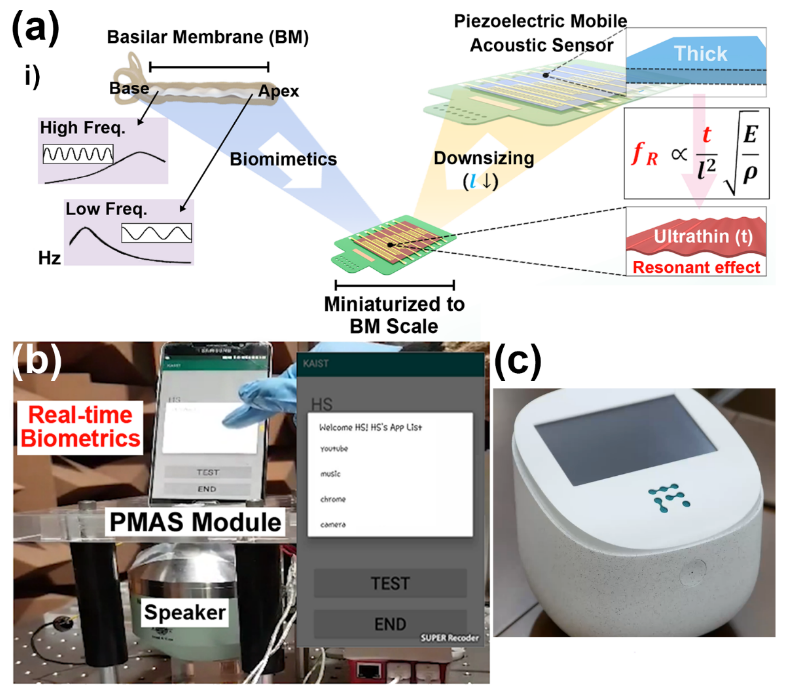A KAIST research team led by Professor Keon Jae Lee from the Department of Materials Science and Engineering has developed a bioinspired flexible piezoelectric acoustic sensor with multi-resonant ultrathin a piezoelectric membrane mimicking the basilar membrane of human cochlea. The flexible acoustic sensor has been miniaturized so that it can be embedded into smartphones, and the first commercial prototype is ready for accurate and long-distance- voice detection.
In 2018, Professor Lee presented the first concept of the flexible piezoelectric acoustic sensor, inspired by the fact that humans can accurately detect voices over long dustances using a multi-resonant trapezoidal membrane with 20,000 hair cells. However, an earlier acoustic sensor could not be integrated into commercial products such as smartphones and AI speakers due to its large device size.
In this work, the research team fabricated a mobile-sized acoustic sensor by adopting ultrathin piezoelectric membranes with high sensitivity. Simulation studies prove that the ultrathin polymer underneath the inorganic piezoelectric thin film can broaden the resonant bandwidth to cover the entire voice frequency range using seven channels. Based on this theory, the research team successfully demonstrated the miniaturized acoustic sensor mounted in a commercial smartphone and an AI speaker for machine-learning-based biometric authentication and voice processing.
The resonant mobile acoustic sensor has superior sensitivity and uses multi-channel signals compared to the conventional single-channel condenser microphone, and it demonstrated highly accurate speaker identification over long distances with only a small amount of voice training data. The error rates during the speaker identification task were reduced significantly by 56% (with 150 training datasets) and 75% (with 2,800 training datasets) compared to the rates of a MEMS condenser device.
Professor Lee said, “Recently, Google is targeting the ‘Wolverine Project’ of long-distance voice separation from multiple- users as the next AI user interface. I expect that our multi-channel resonant acoustic sensor with abundant voice information will be the best fit for this application. Currently, as mass- production process is on the verge of completion, we hope that this will be used in our everyday lives very soon.”
Professor Lee also established a startup company called FRONICS Inc., located both in Korea and the US (branch office) to commercialize this flexible acoustic sensor, he is seeking collaborations with global AI companies.
These research results entitled “Biomimetic and Flexible Piezoelectric Mobile Acoustic Sensors with Multi-Resonant Ultrathin Structures for Machine Learning Biometrics” were published in the 2021 Science Advances (7, eabe5683).

Dr. Hee Seung Wang, Prof. Keon Jae Lee Department of Materials Science and Engineering, KAIST
Homepage: http://fand.kaist.ac.kr
E-mail: keonlee04@kaist.ac.kr






